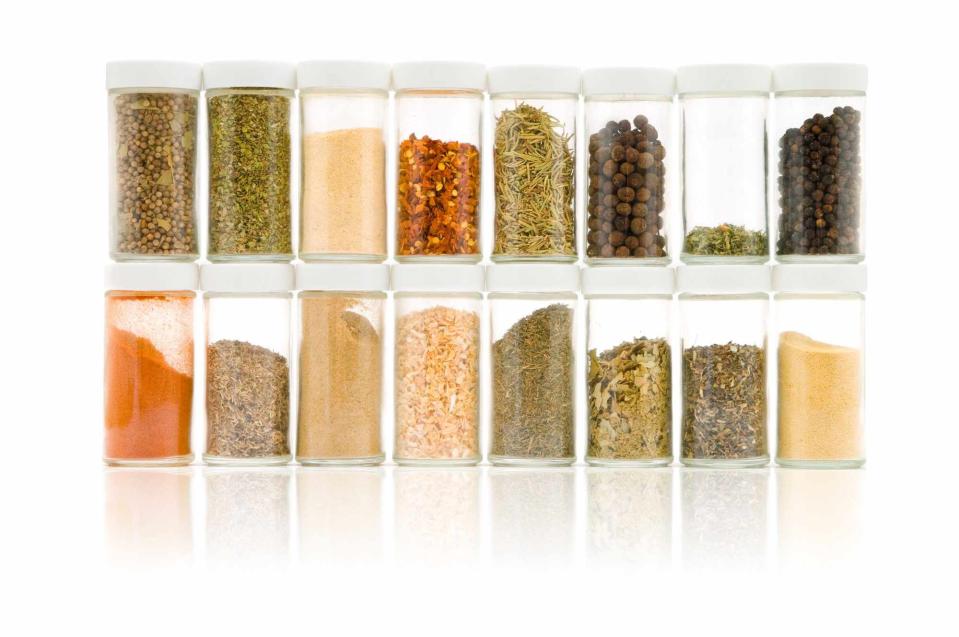What Is Cumin? Here's Why It's A Staple Seasoning
Cumin is a versatile spice that is a must-have in your pantry.

Fact checked by Jillian DaraMedically reviewed by Jerlyn Jones, MS, MPA, RDN, LD, CLT
Dried herbs and spices are essential to any cook's kitchen, but a few always have a permanent spot at the front of the spice rack. Let's call them your "Starting Five." For me, that includes whole black peppercorns (in my trusty grinder), ground cinnamon (for baked goods, oatmeal, and savory dishes), red pepper flakes (my go-to spice any time I need a hint of heat), chili powder (this mix of herbs and spices is an instant flavor booster in so many dishes), and the MVP (or MVS?), ground cumin.
Cumin spice's flavor and aroma work in more dishes than you may realize. Here's more about what cumin tastes like and how to use this essential spice in your kitchen.
Related: 12 Easy Herbs To Grow In Your Garden
What Is Cumin?
Cumin (Cuminum cyminum) is a plant in the parsley family with tiny, boat-shaped seeds that are dried and harvested annually. This popular spice is available ground or as a whole seed. According to spice experts at McCormick, cumin is one of the top 10 spices sold in the U.S.
Some cumin varieties have brownish-yellow (the most common), black, green, or white seeds. Cumin, described as having a warm, earthy flavor, was grown in Egypt and the Middle East during ancient times and gained popularity in the Middle Ages. As its popularity spread, it became an essential ingredient in traditional Mexican, Spanish, Indian, North African, and Middle Eastern cuisines.
Cumin is also one of the main ingredients in chili powder, which is essential to flavoring Southern favorites like chili, barbecue sauce, baked beans, and more.
Whole Vs. Ground Cumin
Cumin adds a rich, warm, earthy spiciness with a hint of citrus to any dish. Whole cumin is often used in traditional Indian dishes. Using the seeds or whole cumin might not disperse flavoring as evenly as the ground spice. When cooking with whole cumin seeds, adding this spice to hot oil before combining other ingredients to help distribute the flavor. Applying heat to whole seeds also helps to release more of their flavoring.
Grinding roasted cumin seeds releases its earthy flavor notes. Because the seeds have already developed more flavor throughout the roasting and grinding process, you can use the ground cumin at any point while cooking. This is the form often used in chili and Mexican dishes or in a dry rub for meats.
How To Store Cumin
Storing seeds in the freezer can help cumin maintain its flavor, but whole cumin should be fresh for up to four years when stored in the pantry. Ground cumin will lose flavoring more quickly than whole cumin, so you should not leave it unused for a long time. Ground cumin will remain fresh for six months when stored in a cool, dark place.
What To Cook With Cumin
I run out of ground cumin more than any spice in my spice cabinet, which tells you a lot. Cumin's warm, earthy, slightly peppery flavor and aroma work in more dishes than you may realize. It is probably in your favorite chili recipe and is a key ingredient in Indian curries, Middle Eastern specialties such as hummus, and Mexican dishes like fajitas. Cumin is a delicious match for meat, especially beef and pork, but it can also give vegetarian dishes more depth and complexity. I love pairing roasted sweet potatoes and carrots with cumin—the smokiness of the spice balances out the vegetables' natural sweetness.
How To Toast Cumin Seeds
Whether or not you grind your own cumin seeds (confession: I don't), it's a good idea to toast the spices before using them, especially if they have been in your cabinet for a while. Here's how to toast cumin:
Over low heat, place the whole seeds or ground cumin in a small, dry skillet.
Toast, constantly stirring or shaking the pan, until the spices are fragrant.
Immediately take the pan off the heat and transfer the spices to a bowl so they don't burn.
If you are using whole seeds, you can grind them once they cool.
For more Southern Living news, make sure to sign up for our newsletter!
Read the original article on Southern Living.

